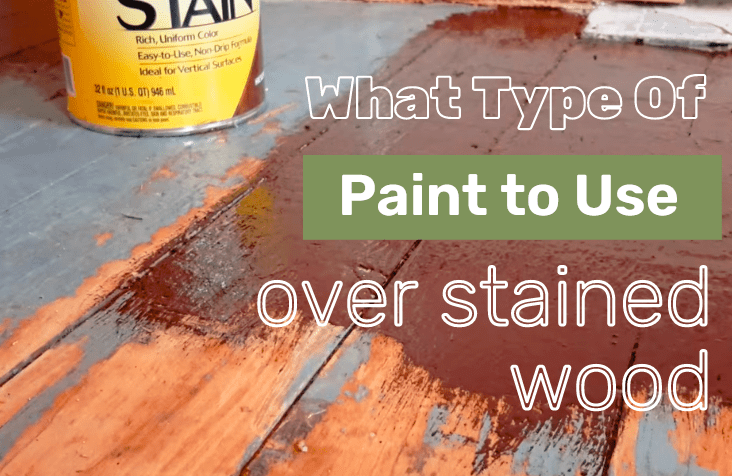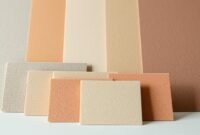Is it possible to successfully paint over stained wood? Absolutely, but the type of paint you choose and the preparation process are vital to a job well done. Painting over stained wood requires careful attention to detail to ensure proper adhesion and a professional-looking result.
By selecting the appropriate paint and diligently preparing the surface, you can achieve a beautiful and long-lasting finish that transforms the appearance of the stained wood.
What type of paint should be used for over-stained wood?
When painting over stained wood, choosing the right type of paint is essential for the best results. Here are a few options that work well on stained wood:

● Latex or Acrylic Paint
Latex or acrylic paint is a popular choice for painting over stained wood. It is water-based, dries quickly, and provides good coverage. Latex paint is available in various sheens, such as flat, satin, semi-gloss, or high-gloss, allowing you to choose the desired finish for your project.
● Oil-Based Paint
Another choice for painting over stained wood is oil-based paint. It provides a durable and smooth finish but has a longer drying time than latex paint. Oil-based paint is known for adhering well to different surfaces, including stained wood.
● Chalk Paint
Chalk paint is a versatile option used directly over stained wood without extensive surface preparation. It creates a vintage, matte finish and has gained popularity for its ease of use and ability to adhere to various surfaces.
Do You Need Primer to Paint Over Stained Wood?
Yes, using a primer before painting over stained wood is generally recommended. A primer performs several critical functions in the painting process, all of which help to ensure a successful, long-lasting finish.
● Adhesion
A primer helps the paint to adhere better to the surface. Stained wood, especially if it’s been varnished or sealed, can be pretty slick, making it difficult for paint to stick. A primer, primarily when used after sanding, creates a surface that paint can bind to more effectively.
● Stain Blocking
Significantly darker or oil-based stains can bleed through the paint over time. This can result in discoloration and an uneven appearance. A primer, particularly an oil-based or shellac-based primer, can seal the stain and prevent it from bleeding through, ensuring that the color of the paint remains true.
Can You Paint Over the Stain with Regular Paint?
Indeed, it is possible to use regular paint to cover stained wood. Nevertheless, the procedure entails more than just applying a layer of paint.
● Surface Preparation
Preparation is the first and arguably most important step. The stained wood surface should be cleaned to remove dust, dirt, or grime. This can be done with a damp cloth or a mild cleaner.
After cleaning, the surface needs to be lightly sanded. Sanding helps to remove the glossy finish that most stains leave behind, creating a rougher surface that paint can adhere to better.
Liquid sandpaper can be an effective alternative for those who avoid traditional sanding. This product cleans and deglosses the surface, providing a suitable foundation for the primer and coat of paint to adhere. Whether you choose mechanical sanding or a chemical deglosser, ensuring a properly prepared surface is key to a flawless finish.
● Choosing the Right Primer
A primer should be used before applying the paint. The primer is essential as it helps to block the stain from bleeding through the paint. The type of primer you choose depends on the type of stain on the wood.
An oil-based primer is typically recommended for oil-based stains. If the stain is water-based, a latex primer can be used. Some experts recommend a shellac-based primer due to its excellent adhesion and stain-blocking capabilities.
● Applying the Paint
Once the primer is dry, the regular paint can be applied. Latex-based paint is often used because it’s durable, easy to clean up, and dries quickly. It also adheres well to primed surfaces.
So, what type of paint should be used over stained wood? The answer depends on the finished look you want on your furniture. By considering the type of stain and choosing the right paint and primer, you can achieve a professional-quality finish that enhances the beauty and longevity of your wood surfaces.
When deciding on the paint to cover your beautifully prepared stained wood, consider the environment where the item will be placed. An oil-based coat of paint may offer superior durability and protection for areas exposed to high traffic or moisture.
Meanwhile, for projects where quick completion is desired, the faster drying times of latex or acrylic paints might be more appealing, allowing for quicker reassembly and use.


